If you’ve ever popped the hood off a luxury timepiece and looked beneath the caseback, I’m sure you’d be amazed by its anatomy – gears, springs, and wheels, all engaged in perpetual motion, creating a poetic mechanical dance. However, all these intricacies cater to the timepiece’s purpose, and that purpose is defined by its case. Right from the drawing board level, the first few design strokes on the canvas establish the perimeter of the timepiece (its case) and the objective the timepiece will serve. Much like mankind, watchmaking has evolved and innovated through generations, and these ‘objectives’ for timepieces have diversified, catering to a slew of modern lifestyle indulgences – in the process, giving birth to radical new watch case designs.
Here’s a guide to understanding the most quintessential, unique, and iconic luxury watch case shapes and their histories.
Round
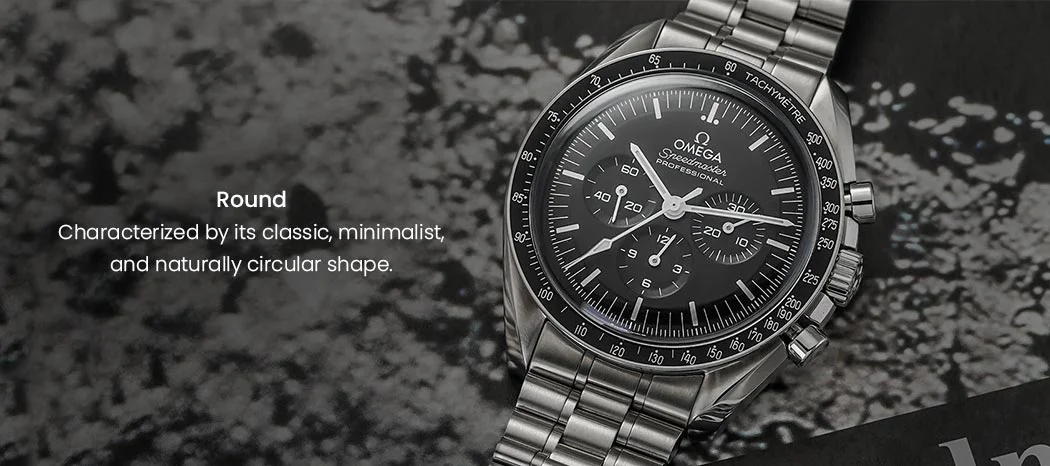
Characterized by its classic, minimalist, and naturally circular shape, round watches have been historically used to convey the passing of time, signifying completion. In the early 16th and 17th centuries, portable pocket watches were predominantly round, symmetrically complementing the shape of gears and the circular motion of a dial’s hands – allowing ease in design and manufacturing. But as timekeeping evolved in functional and aesthetic avenues through generations, these pocket watches became wrist-strapped timepieces with lugs and straps – setting an eternal design standard in timekeeping.
In the 20th century, round watches were revered for their timeless elegance and versatility and were suitable for formal and casual wear. The Patek Philippe Calatrava (1932), Breitling Navitimer (1952), and the iconic Moonwatch – Omega Speedmaster (1957) are popular examples of round-cased watches.
Oval
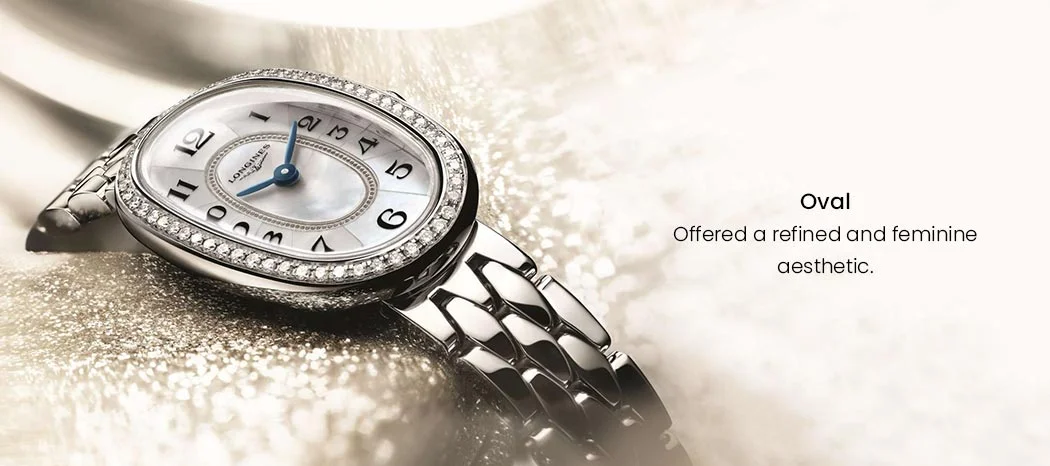
Oval watches are quite a rare breed, even though they’re siblings of round watches. Simply because watchmakers opt for a binary choice: round or square – only a few dared to dream in between these two dimensions. The oval shape was particularly popular among women’s watches during the Art Deco era, as it offered a refined and feminine aesthetic. The Cartier Baignoire (1912) became one of the most recognized oval-shaped watches of the era and was spotlighted again in 1968 with the Patek Philippe Golden Ellipse. Today, the Patek Philippe Nautilus, Franck Muller Oval series, Breguet Reine de Naples series, and Longines Symphonette series are apt examples of oval watches.
Square & Rectangular
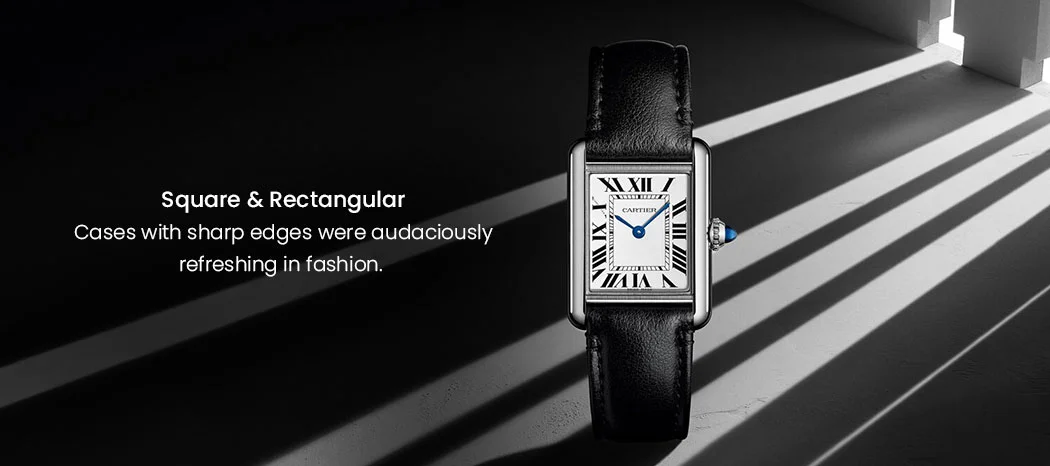
As the Art Deco movement began in the 1920s, watchmakers started challenging the industry’s design status quo. This era was quintessential of bold geometric shapes, symmetry, and a fascination with modernity. Square and rectangular watch cases with sharp edges were audaciously refreshing in fashion. Watches like the Cartier Santos Dumont (1904), Cartier Tank (1917) and Jaeger-LeCoultre Reverso (1931) epitomized this style until the dark clouds of war shrouded the world.
After WWII, square watches saw a revival through the 50s and 60s with models like the Patek Philippe Gobbi-Milano (circa 1950s), TAG Heuer Monaco (1969), followed by new-age icons like the Bell & Ross’s BR series, and NOMOS Glashütte Tetra, who’ve carried the baton of square watches into contemporary times. Square watches represent a departure from tradition, boldness, and a willingness to stand out.
Tonneau
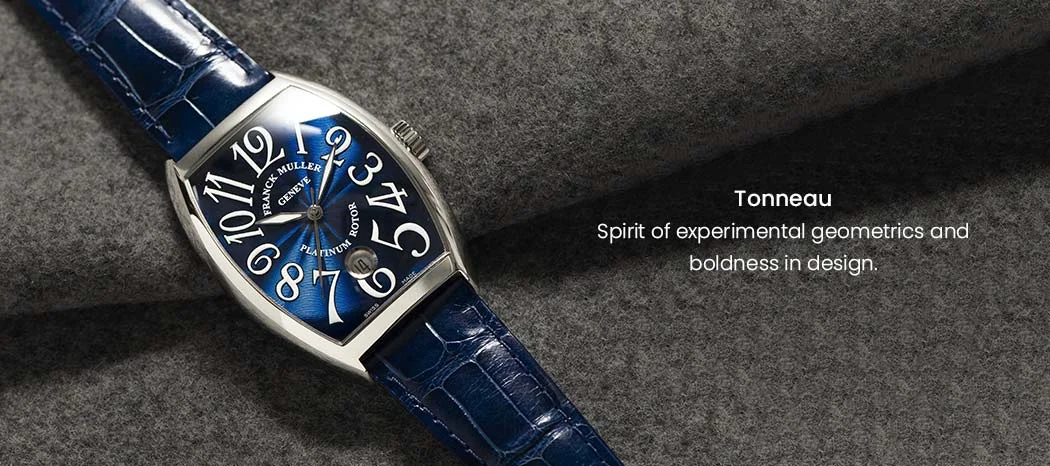
‘Tonneau’, taking the French for ‘barrel’, was popularized during the Art Deco era for not being as ubiquitous as round watches – it wasn’t fully round or square, taking after the era’s spirit of experimental geometrics and boldness in design. The Tonneau has been consistently refined and adapted to suit modern tastes through generations. It has been immortalized by icons such as the Breguet Héritage series, Vacheron Constantin Malte series, Patek Philippe Gondolo series, Franck Muller’s Cintrée Curvex and Vanguard series, and the vast majority of Richard Mille offerings.
The gentle curves of the Tonneau case boast a dose of sophistication, while its elongated form offers a slimming effect. Rooting from the Art Deco movement, it also carries a modern appeal as it counters traditional watchmaking design- this duality earns it a distinction.
Cushion
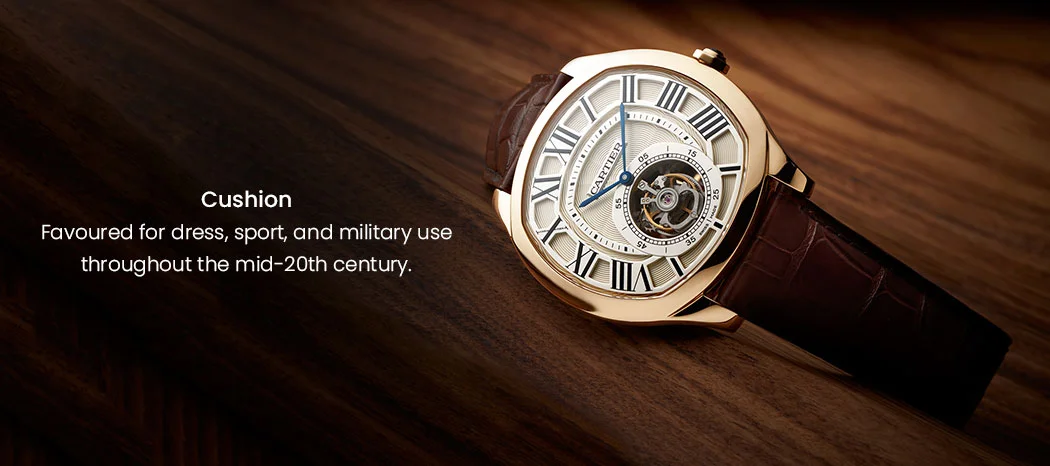
Cushion-shaped watches take after their softened edges or elegantly rounded corners. Offering a unique blend of elegance and robustness, Cushion-shaped watches were favoured for dress, sport, and military use throughout the mid-20th century.
The 1936 Panerai Radiomir, which the French Navy famously employed, is a quintessential example of cushion watches. To date, this silhouette is rampantly used in the maison’s offerings like the Submersible, Luminor Due, and Radiomir. Other famous examples of cushion-shaped watches include Vacheron Constantin’s Historique American 1921, eponymous by its year of introduction, it uses an angled dial. Notably, we have the Piaget Polo S and the Drive de Cartier for modern-day icons. Historically, cushion-style watches are revered for their ergonomic design and versatility.
Octagonal
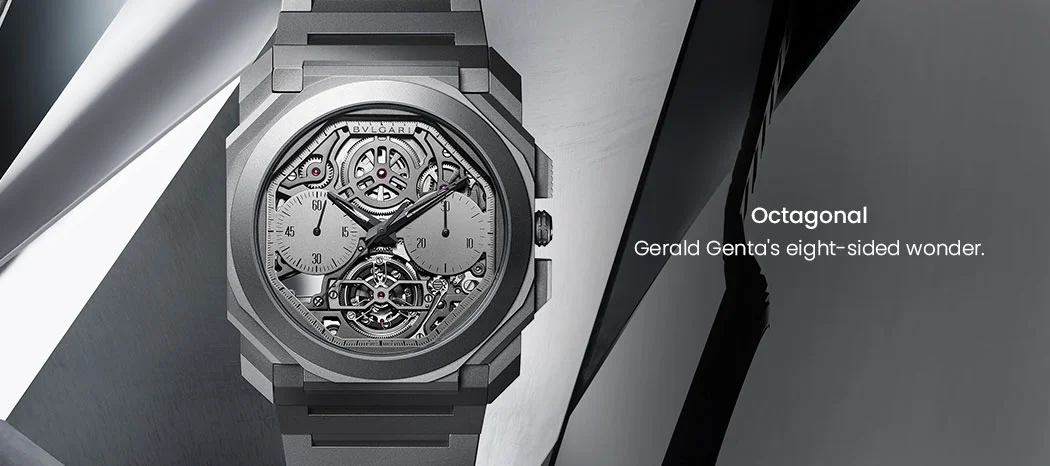
In the early 70s, Audemars Piguet’s Georges Golay tasked Gérald Genta with creating a stainless-steel sports watch. Overnight, Genta conjured an octagon-shaped, eight-screw-bezel Royal Oak. The Octo. Genta’s introduction of the Octagon in the 70s created a genre, and the silhouette has never left the scene.
A few years later, Girard Gerregaux unveiled the Laureato, a true gem of sporty elegance. Furthermore, during the 90s, Cartier famously unveiled the Santos Octagon, their take on the Royal Oak. After Bulgari acquired Genta’s company in the early 2000s, another eight-sided Genta wonder was revealed to the world.
East-to-West
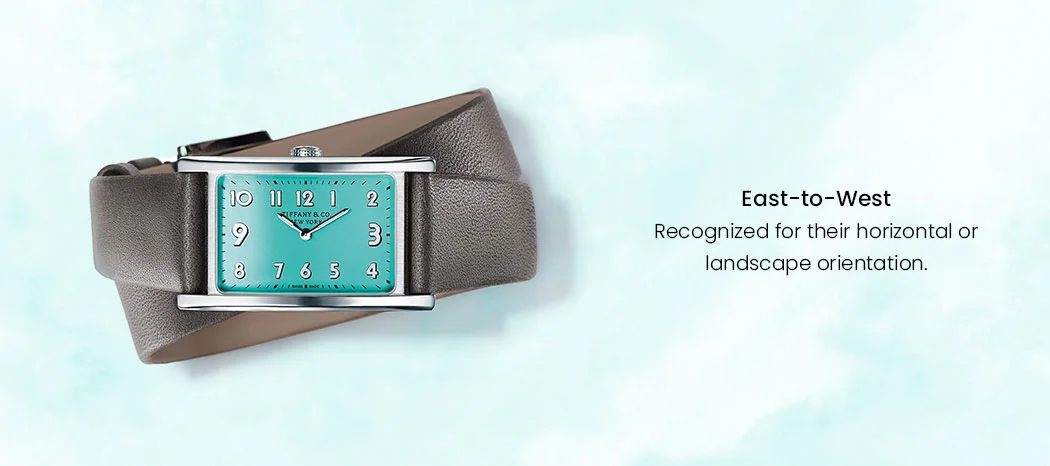
Recognized for their horizontal or landscape orientation, East-to-West watches boast a wider case than its vertical length. Popularized during the Art Deco era for its radical design, it was seen as a fashionable dress watch option for women and men. This connection to a bygone era gives these watches a vintage appeal that resonates with collectors and enthusiasts who appreciate the artistry and craftsmanship of early 20th-century design. Tiffany’s East West and Piaget’s Altiplano series are prime examples of this feat.





Recent Posts
Recent Comments
Archives